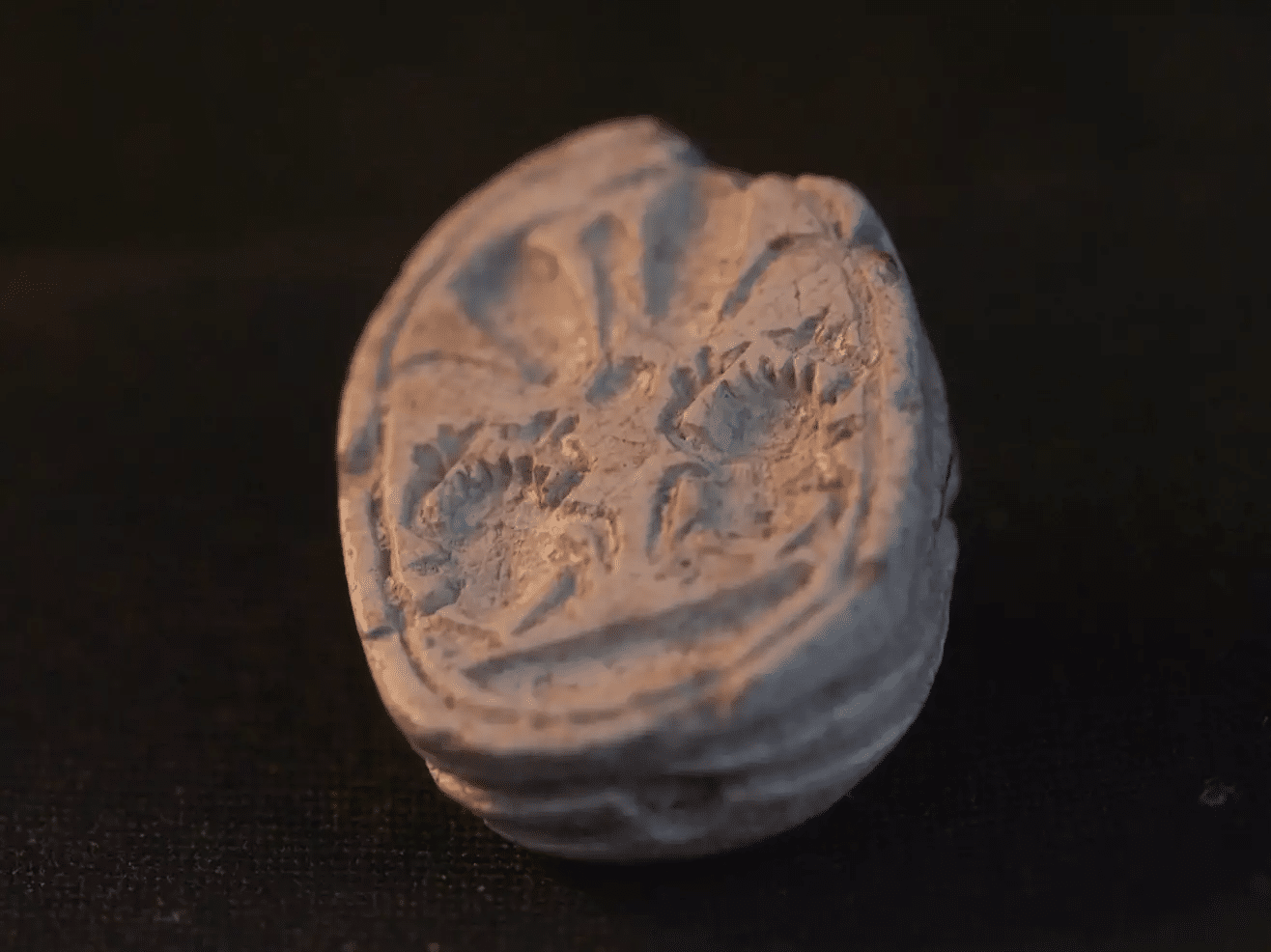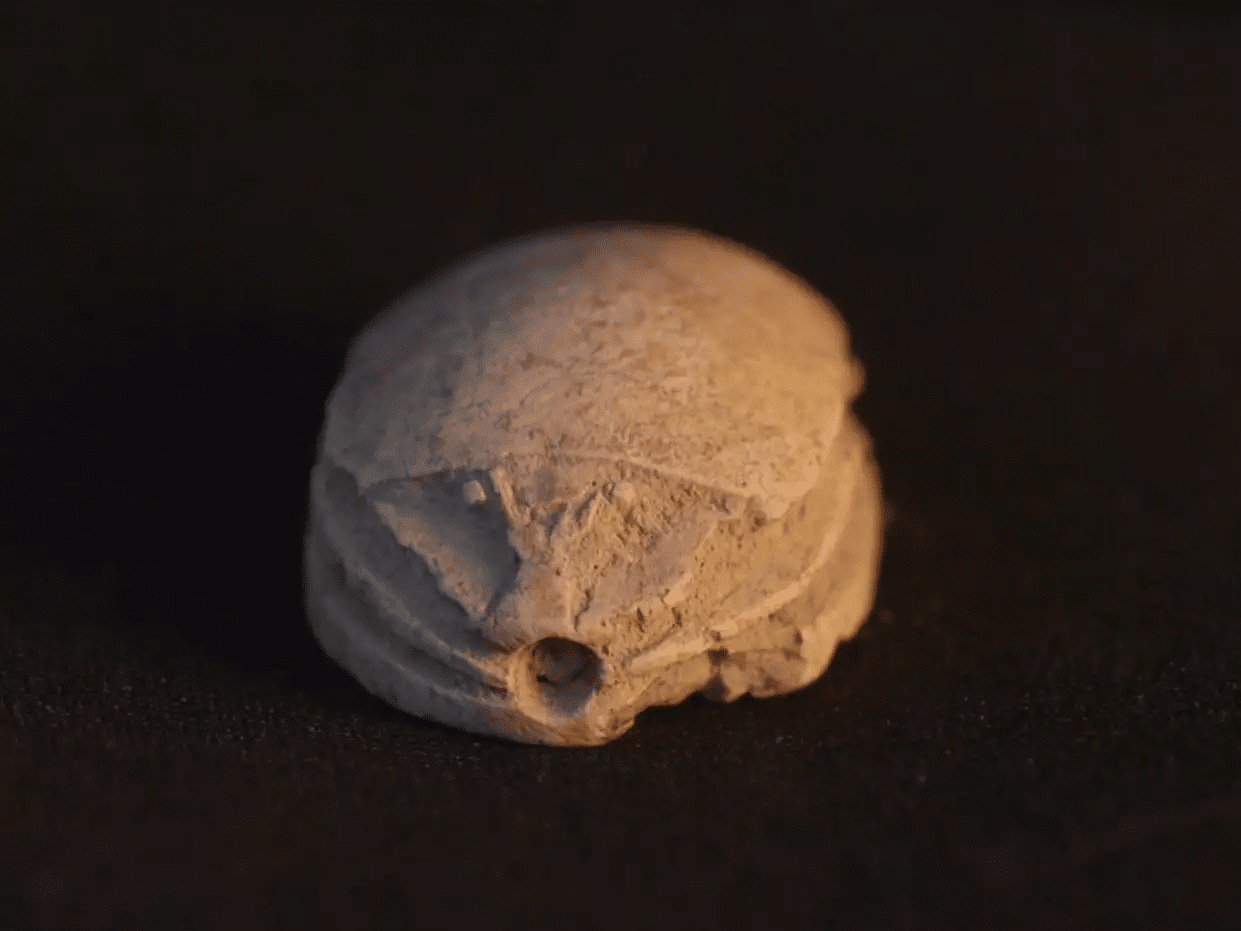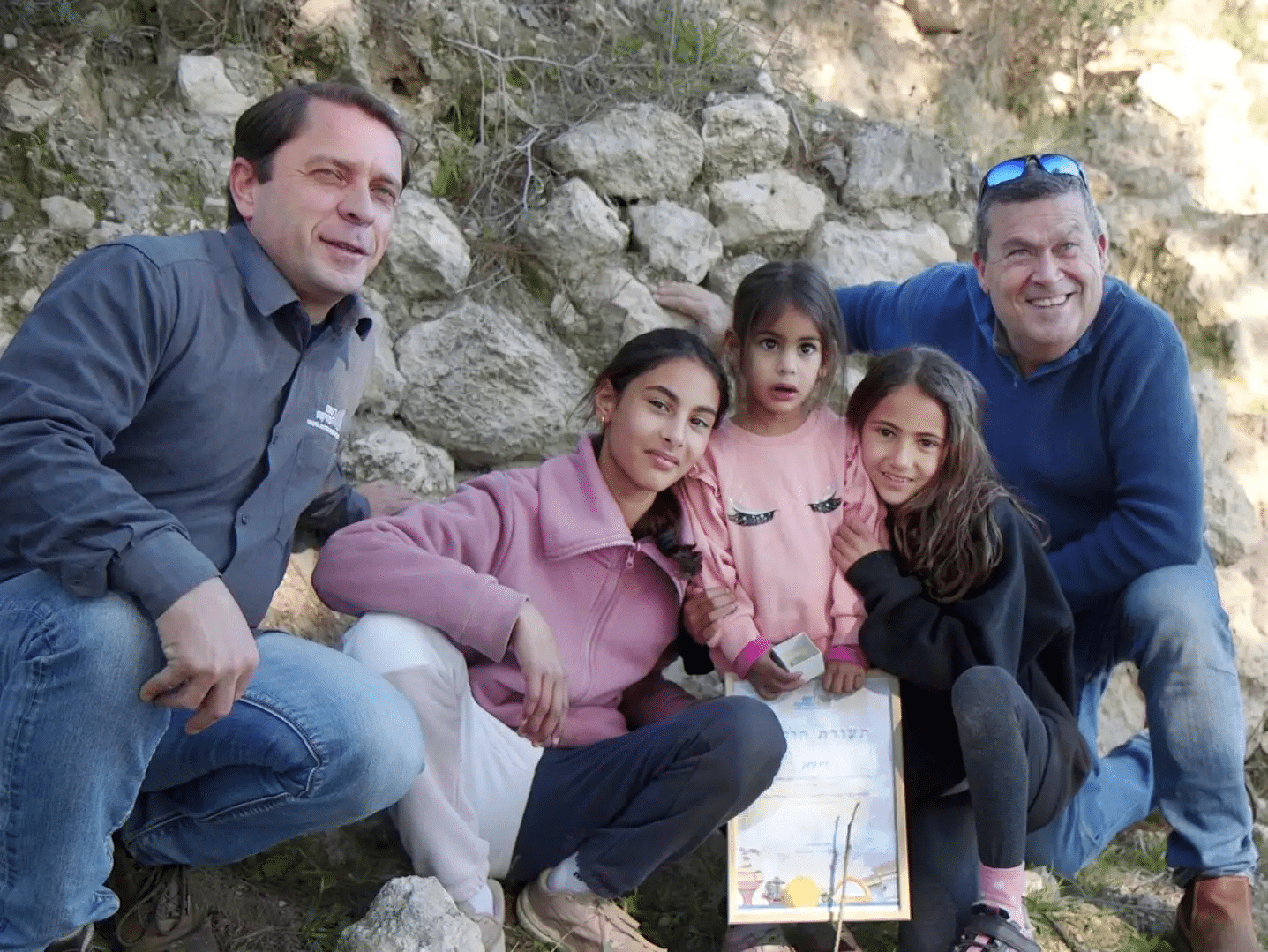A three-and-a-half-year-old girl made an extraordinary archaeological discovery during a family outing near Beit Shemesh last month, unearthing an ancient seal dating back approximately 3,800 years.
Ziv Nitzan from Moshav Ramot Meir stumbled upon the rare artifact while hiking with her family at Tel Azeka in early March. "We were walking along the path, and then Ziv bent down – and out of all the stones around her, she picked up this particular stone," recounts Omer Nitzan, Ziv's sister. "When she rubbed it and removed the sand from it, we saw something was different about it. I called my parents to come see the beautiful stone, and we realized we had discovered an archaeological find! We immediately reported this to the Israel Antiquities Authority."

The family promptly reported their finding to the Israel Antiquities Authority (IAA). Semyon Gendler, district archaeologist for Judea, commended Ziv and her family for their quick reporting and presented her with a certificate of appreciation for good citizenship.
Dr. Daphna Ben-Tor, an expert in ancient amulets and seals, identified the object as a Canaanite scarab from the Middle Bronze Age. "Scarabs were used in this period as seals and as amulets. They were found in graves, in public buildings and in private homes. Sometimes they bear symbols and messages, that reflect religious beliefs or status."

The small, decorated scarab-shaped seals originated in ancient Egypt and were designed in the form of a dung beetle. This beetle was considered sacred by ancient Egyptians and symbolized new life, as it created a ball of dung in which it laid its eggs, from which new life emerged.
The artifact was discovered at the foot of Tel Azeka, an important archaeological site in the Shephelah region with evidence of numerous cultures throughout history. Excavations by Tel Aviv University researchers have revealed findings from the kingdom of Judah, including city walls and agricultural installations. Tel Azeka is also known as the biblical battlefield where David confronted Goliath.

"We have been excavating here for almost 15 years, and the excavation findings show that during the Middle Bronze and Late Bronze Ages, here in Tel Azekah, thrived one of the most important cities in the Judean Lowlands," said Professor Oded Lipschits, director of the archaeological excavation at the site for Tel Aviv University. "The scarab found by Ziv joins a long list of Egyptian and Canaanite finds discovered here, which attest to the close ties and cultural influences between Canaan and Egypt during that period."
The ancient seal will be displayed in a special Passover exhibition organized by the IAA at the National Campus for the Archaeology of Israel in Jerusalem, alongside other artifacts from Egyptian and Canaanite periods, most of which are being presented for the first time.

Heritage Minister Amichai Eliyahu praised the discovery, noting, "The seal that little Ziv found during a family trip to Tel Azekah connects us to a grand story, that of the ancient civilizations that lived in this land thousands of years ago. The scarab Ziv found also reminds us that in the Land of Israel, even children can be a part of discovering history."
"Ziv, and her family, deserve praise for handing over the find to the National Treasures of the state of Israel," says Eli Escusido, Director of the Israel Antiquities Authority. "Thanks to her, everyone will be able to see it and enjoy it."




